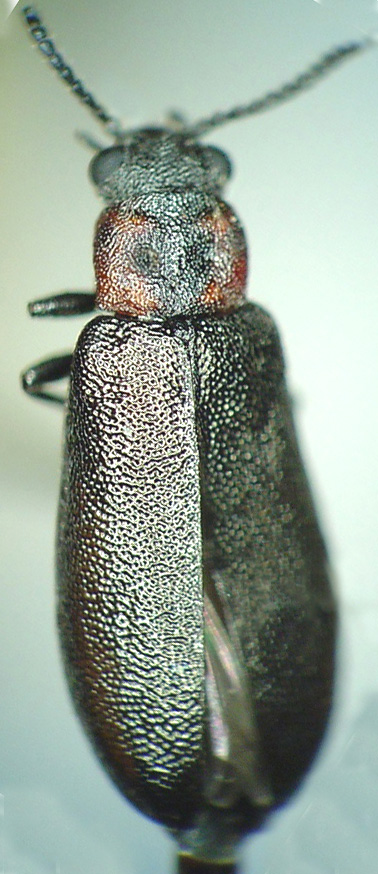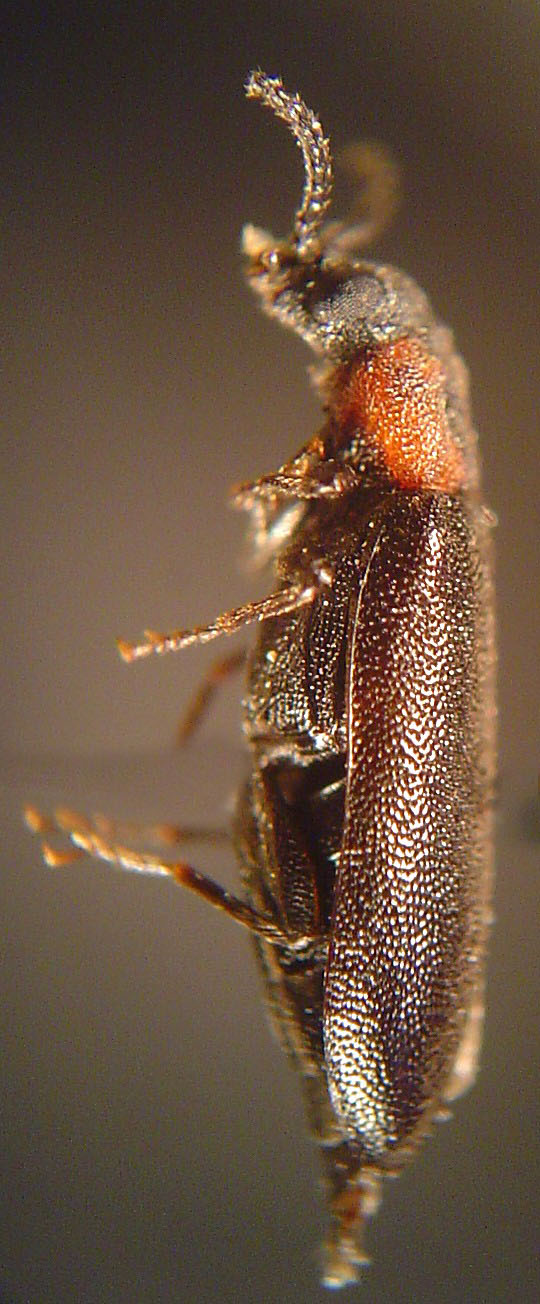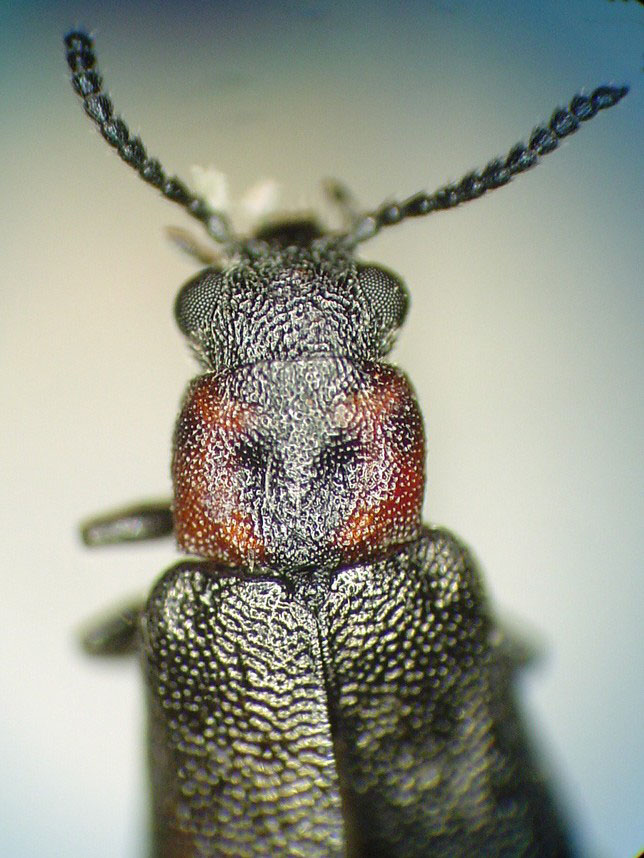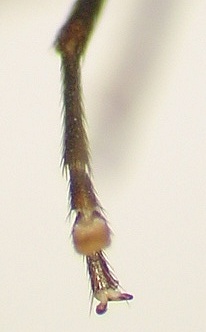Lacconotus punctatus - dorsal habitus.
Introduction
|
Lacconotus punctatus - dorsal habitus. |
Pictured below is a specimen of Lacconotus punctatus LeConte collected by Gary Selig in Bridgewater, Lunenburg County, Nova Scotia, Canada on June 16, 2004. This is the first record of this species, and indeed of the entire family Mycteridae (the palm and flower beetles), from Atlantic Canada. Previously L. punctatus was known in Canada only from records in Ontario and Quebec (Campbell 1991). Majka and Selig (2006) and Majka and Pollock (2006) both published information on this discovery.
Very little is known about the biology of this species. A specimen of a western species was collected under the bark of a dead poplar; specific habits of adult Lacconotus remain unknown. It appears that most larvae of this subfamily live under dead tree bark. (Pollock 2002)
The systematic and evolutionary relationships of the group are equally poorly known. They have at various times been placed in the Melandryidae, Pythidae, or Salpingidae until Crowson and de Viedma (1964) proposed a separate Family, the Mycteridae. D. Pollock is currently engaged in a analysis of genera and species of Eurypinae. The genus Lacconotus is restricted to the Nearctic with only three species known (L. punctatus LeConte, L. pinicolus Horn, and L. pallidus Van Dyke), although the later two western species are very different and may have to be accommodated in a new genus.
Description
The specimen is 5.4 mm long; shining black throughout except for the pronotum which is rufous-red in coloration with a dark median stripe that expands apically and medially around two circular median depressions. The dorsal and ventral surfaces are densely punctate throughout, more coarsely on the elytra, less coarsely on the abdominal sterna (5 visible sterna). The punctation is confused. Each puncture bears a short whitish seta. The pronotum is rounded laterally with no lateral line.
The tarsal formula is 5-5-4 with the penultimate tarsal segment bearing a broad membranous lobe beneath. The tarsal claws have a broad basal tooth and are separate to the base. The procoxal cavities are open behind and the metacoxae are narrow and transverse.
The antennae are 11-segmented, short, and moniliform. The antennal base is hidden beneath small protrusions directly in front of the eyes. The clypeus is linear across the apical margin; the labrum is emarginate at the apex. The apical mandibular palp is fusiform and blunt at the tip. The eyes are large, round, and protrude significantly from the densely, coarsely punctate head.
Select any of the thumbnails below to see a larger image.

|

|

|

|
|
Dorsal Habitus |
Lateral Habitus |
Head & Pronotum |
Meta-tarsus |
References
Campbell, J.M. 1991. Mycteridae. In Bousquet, Y. [Ed.]. Checklist of Beetles of Canada and Alaska. Agriculture Canada Publication 1861/E. pp. 267
Crowson, R.A. and de Viedna, M.G. 1964. Observations on the relationships of the genera Circaeus Yablok. and Mycterus Clairv. with a description of the presumed larva of Mycetrus. Eos, 40: 99-107.
Majka, C.G. and Pollock, D.A. 2006. Understanding saproxylic beetles: new records of Tetratomidae, Melandryidae, Synchroidae, and Scraptiidae from the Maritime Provinces of Canada (Coleoptera: Tenebrionoidea). Zootaxa, 1248: 45-68.
Majka, C.G. and Selig, G. 2006. Lacconotus punctatus and the family Mycteridae (Coleoptera) newly recorded in Atlantic Canada. The Canadian Entomologist, 138(4): 636-637.
Pollock, D.A. 2002 Mycteridae Blanchard 1845. In: Arnett, R.H., Jr., Thomas, M.C., Skelley, P.E., and Frank, J.H. [Eds]. 2002. American Beetles, Volume 2: Polyphaga: Scarabaeoidea through Curculionoidea. CRC Press, Boca Raton, USA. pp. 530-533.
Many thanks to Daniel K. Young, director of the University of Wisconsin Insect Research Collection for confirming the determination of the specimen.
(c) All rights reserved. Christopher Majka & Empty Mirrors Press